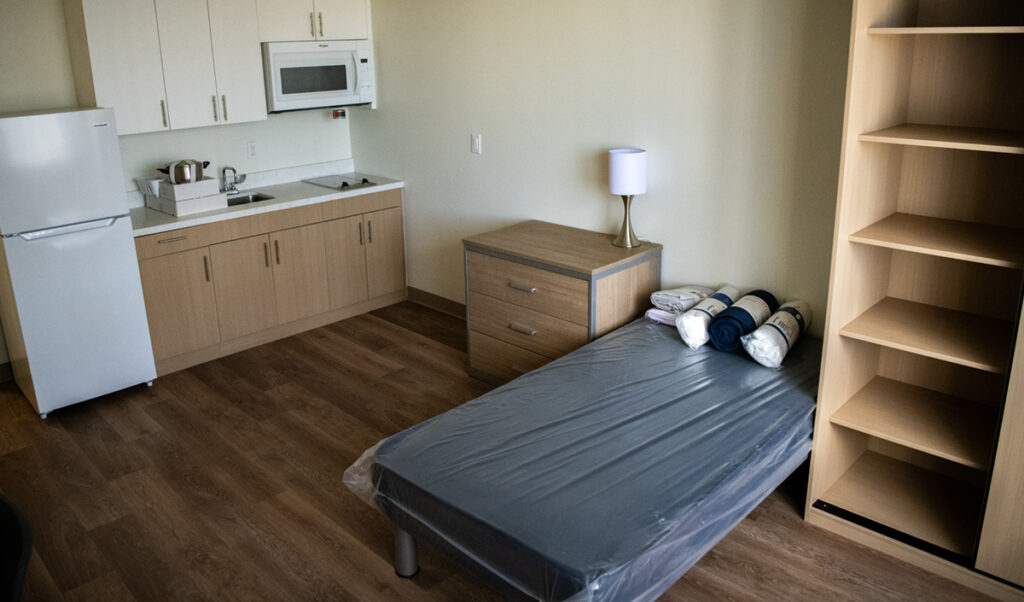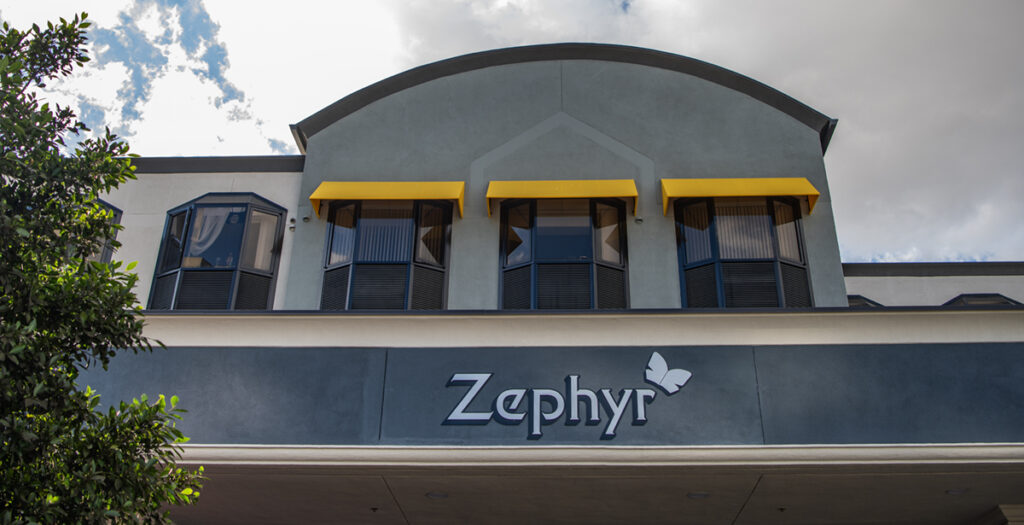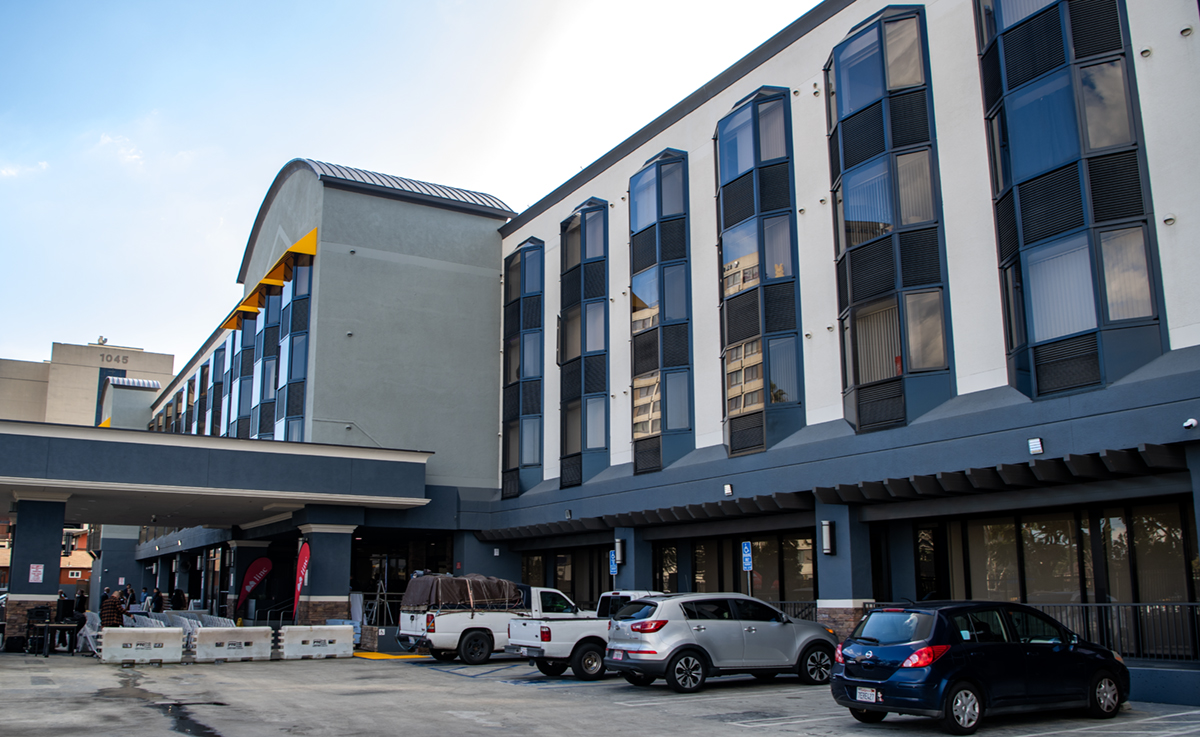Housing advocates and civic leaders, eager to show the public progress on the region’s housing crisis, on Wednesday unveiled two new low-rent apartment complexes built for the formerly homeless.
Outside the 137-unit Zephyr complex at E. 11th Street and Atlantic Avenue — formerly a Holiday Inn Express — a crowd of city and nonprofit executives, legislative stand-ins and dignitaries toured the ground floor and a sample room located one level above.
Despite opening in July, the building is already at 91% occupancy, with 125 rooms claimed. Staff said the building will fill up quickly, adding with certainty that occupancy rates are sure to stay high.

One tenant, Phil Hisel, said he and a friend applied for placement there through the city’s Multi-Service Center, its hub for homelessness aid. He recollected checking in, week after week, anxiously awaiting a decision.
After eight months waiting for a place to live, the response came: not just approved, but also neighbors; the two live five doors down from each other.
Zephyr is the fourth building that LINC Housing Corp., a longtime affordable housing developer, has built in Long Beach — all of which were established in the past four years. The company also celebrated the eventual opening of Crescent, a 40-unit complex near Cal State Long Beach they say will open later this year.
In the coming months, LINC says it will break ground on two more properties, at the former historic Long Beach armory building and another in the Zaferia neighborhood. They also plan to build units on their Elm Street campus.
The buildings were purchased through California’s Project Homekey, a state program that subsidizes the conversion of underused motels and hotels into affordable housing. Funding for construction was pooled with $33.3 million in federal grants through the American Rescue Plan Act, and another $8.28 million from a permanent mortgage loan.
Local government officials and nonprofit housing providers touted the speed and cheapness of the acquisitions, saying building conversions deliver projects in two-thirds of the time at half the cost when compared to the usual siting and development of affordable housing or shelters.
The studio units were built for $203,000 each at Zephyr, $343,000 a room at Crescent.

Project Homekey, which ran three rounds from 2021 to 2024, buys motels and hotels that will eventually be retrofitted for permanent housing.
In that time, it brought more than 250 projects totaling 15,850 units to be purchased or that have been purchased by municipalities or housing authorities, according to state officials. In Los Angeles County, the program will add about 2,150 units — 351 of which will be in Long Beach.
Going forward, the homes will go to those struggling with chronic homelessness. These are typically “the most challenging” people to house, said Mayor Rex Richardson.
They are a population who live on the streets for years, and are far more likely to have mental disabilities, addiction problems and life-threatening illnesses like heart disease, cancer and diabetes. They’re far more likely to have suffered a traumatic brain injury, which may have precipitated their homelessness. Without direct assistance, many will remain homeless for the rest of their lives — at enormous cost to society and themselves.
“Many times this is the housing that we need the most,” Richardson said, adding: “You can’t simply just toss everyone into a congregate shelter and effectively figure it out.”

Many need regular, if not continuous, assistance in the day-to-day challenges of life: reacquainting with family, building relationships with neighbors, finding enjoyable activities or work, managing finances and learning how to eat healthy food.
Also needed: counseling, financial coaching, help navigating bureaucracies and applying for benefits like disability income, and connections to medical providers and substance abuse programs. The subsidized rent, covered by federal project-based vouchers, that tenants pay is 30% of their income, which is often in the form of disability payments.
Officials said supporting housing projects like this represent the state’s granular approach to do away with a major social problem in slow, methodical steps.
Suny Lay Chang, president of Linc Housing, said their sites, once established, have become community anchors, a nexus around which things flow.
“We’re going to anchor this corridor with development and opportunities and possibilities,” she said.

